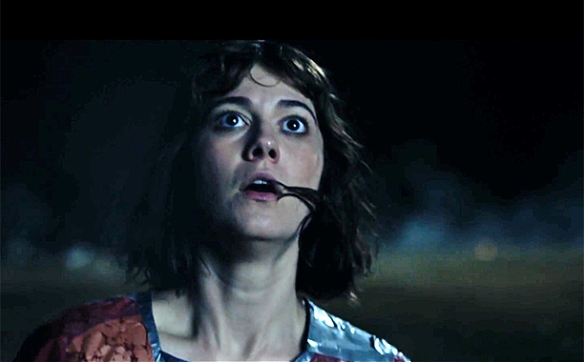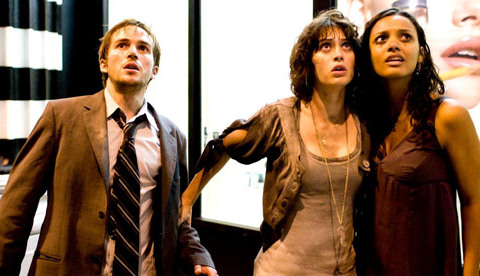
This past week I unexpectedly entered into a wormhole of Hugh Grant films that gave me some insight on my feelings towards romantic comedies. Next to horror, I consider this to be my favorite genre because I enjoy the escapism of falling in love. I accept that I will never get to experience what happens in these kind of movies such as “winning the girl” in say my favorite movie Take Me Home Tonight but I can at least live vicariously through these characters for 90 minutes. What fascinates me about rom coms is they all land somewhere on the spectrum fantasy, some are more believable than others. You have rom coms that are specifically grounded in a realistic scenario like Two Weeks Notice which deals with an unexpected office romance or you can go as far as Notting Hill where an ordinary Brit has a whirlwind romance with a major movie star. Then movies like Bridget Jones’s Diary find a spot in the middle with grounded characters balanced with heightened circumstances. I’m a big proponent of the grand imagination the genre allows but over the course of this film exploration I realized my desire for escapism is rooted in my need for practicality.
I began with Notting Hill which is the epitome of fantasy romance and I’ll go so far as calling it Julia Roberts fan fiction. The movie plays out like a dream as Will Thatcher (Hugh Grant) meets movie star Anna Scott (Julia Roberts) at his quaint book shop off Portobello Road and after a mishap of spilling orange juice on her shirt they end up at his place and she kisses him. The movie feels like something a twelve year old would write, imagining how amazing it would be to date one of their favorite actresses. As much as I did spend my youth envisioning similar scenarios, I can’t get into this movie because the character of Anna is so uninteresting. Besides the movie wanting you to accept the motivation of Anna spontaneously choosing this rando as a potential mate, it also wants you to sympathize for an overpaid celebrity who lies about having a boyfriend and insights the cliche breakup fight that has as little justification as the first kiss. My middle school daydreams of Ryan Reynolds were more rationalized than this. It is “surreal but nice” as Will puts it but never gives me enough character development beyond “this is Julia Roberts” to become invested.

Bridget Jones is slightly more grounded in its London atmosphere and is hyper aware of the big choices it’s making. It embraces its tropes but wants to push the limits of believability with scenes like the fight between Darcy (Colin Firth) and Daniel (Hugh Grant) where both characters throw each other through a glass window and get up seemingly unharmed. The film is having fun with the outrageousness the genre allows with its biggest grounding element being Bridget Jones herself. She is meant to represent the every girl, the single thirtysomething who loves watching rom coms and eating ice cream. She is relatable because of her countless imperfections like the inability to be smooth with men shown in her opening encounter with Darcy where she talks unflatteringly about being hungover. Oddly at the same time as she is made to be someone I can see myself as, the movie seems to be talking down to me. The film makes a big deal that she weighs 136lbs (same a me) and how she really needs to get her life together, her weight being a part of that. But the way it plays up her getting to sleep with the hot asshole boss Daniel and also have Darcy tell her “he likes her just the way she is” feels condescending like great things can come your way even if you’re “fat”. As much as I appreciate the movie’s initiative to have a main character appear more average and not just a glamorous movie star they throw a pair of glasses on to make homely, I still know that’s Renee Zellweger and she gained this weight to make me feel better and will go back to being beautiful in the end. I don’t need this movie to throw me a bone, I prefer to have an actress look like herself and I’ll project my own image on her. I don’t need her to tailor herself to what she thinks a regular girl looks like.

I wrapped up with Two Weeks Notice, a film I really did enjoy when it was released back in 2002 and is indeed the most realistic of them all. If it wasn’t for the cheesy poster or the fact that it stars the titans of romantic comedy, Grant and Bullock, it could be assumed as more of a workplace comedy about the relationship between co-workers who are extreme opposites yet become codependent over time. In the movie George Wade (Hugh Grant) is a rich, privileged boss who can’t take care of himself because he’s been babied all his life and is too charming to be told no and after hiring the socially aware, headstrong Lucy Kelson (Sandra Bullock) he grows a conscious and she learns to open up to love. The realism of their relationship for me comes from them being fully formed characters both with agency and emotional arcs. Even the grand romantic gesture trope which here is a speech George give Lucy after she quits may have the subtext of saying “I’m just a boy standing in front of a girl asking her to love him” but manifests in his change of heart in saving the community center she cares so deeply about. He’s showing his love by making a morally important choice that has no contingency that she should be with him. The film’s only real heightening is through Lucy’s more quirky character traits that Bullock is known for (she runs into a ficus for roughly two minutes) or the sitcom-esque situations (George having to carry Lucy on a backed up freeway so she can use the toilet on an RV). It’s very much a boy meets girl scenario that I could see played out in real life.
I like that this genre can be so expansive and encapsulate the range of imagination. This past week when I ranted about Notting Hill so many people told me how sweet and charming they found it and disagreed with my lack luster opinion. I’m glad that much like we’re all attracted to different people, we’re also attracted to the different categories of rom coms. Overall, none of these films would really be my type. As I stated earlier, car stealing, cocaine driven, sex on trampoline movies like Take Me Home Tonight are more my jam but I’m glad there’s so many choices to watch when I want to pretend to experience love. Hopefully there’s a perfect fit for everyone, whether if it’s with Hugh Grant or not.


















